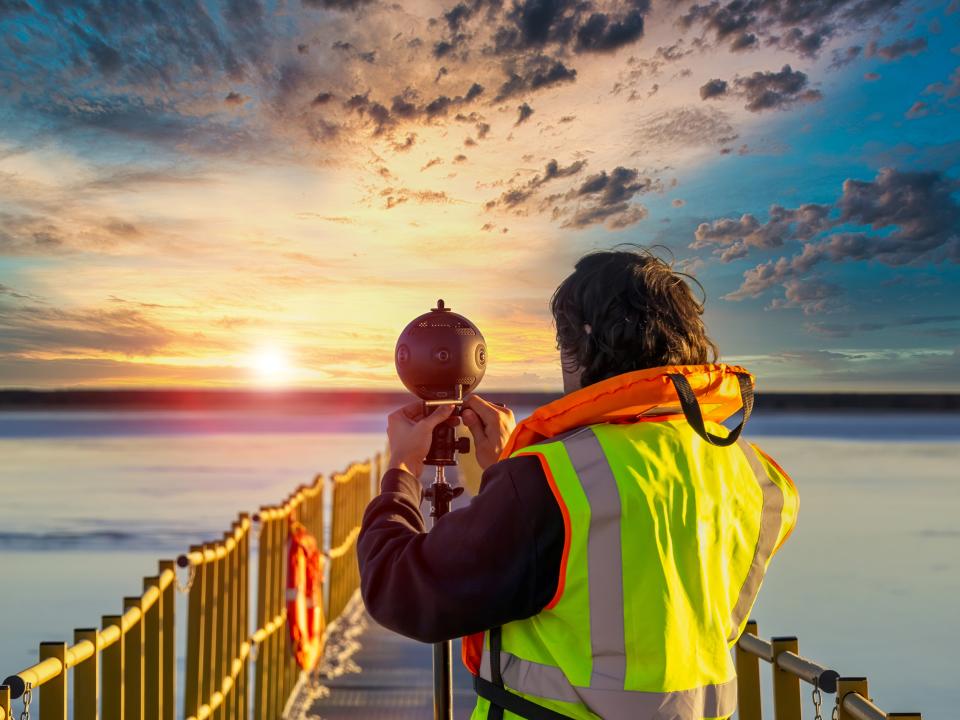Hi, my name is Jane Frost and I’m an associate professor in nursing at the University of Canberra, and I’m here to share my experience with 360-degree video and online learning.
We’ve found 360-degree video to be engaging. For the students, it’s authentic because it’s filmed in real places and can provide a connection to the learning for students, particularly when they’re learning remotely.
During the Covid pandemic we had to move swiftly, or pivot, to online learning and it allowed us to still connect with our students who would normally be in the simulated learning environment, to give them an experience filmed in a familiar area.
They could use it individually, or in peer learning experiences where they learned with and from each other. It’s accessible and easy to use, and scalable because students can use the 360-degree video on their own devices.
It provides authentic assessment. It can increase engagement in virtual rooms.
And we have also developed a digital escape room for the asynchronous learning that we have implemented. Let's have a look at a couple of the experiences:
This experience that I’m showing you now is filmed and used in an application called SITU360, which allows you to embed hot spots so that students can zoom in find out more specific information, if that’s what's required.
And this has been the one that we have used in both the virtual rooms but also as an authentic assessment. As you can see, you can actually look around the ward and then explore areas that have hotspots, which have specific information that we need the students to be able to look at. We’ve also embedded notes.
You can see here that there is a patient monitor and this is quite a familiar scene for the students
because this is the environment and the mannequins that they would be used to using each week when they came into the university.
The escape room is a virtual escape room because we can't lock somebody in, based on game-based principles.
The idea is that they are virtually locked in to this experience, they have to find the clue which is found by accessing areas and solving issues that they need to as part of clinical learning.
And they will then be given a code that allows them to find the way out. That then takes them to a ward environment and their congratulations tick.
We have found that these experiences have been engaging for students and have allowed us to present learning in different ways and to still get that engagement when the students are learning remotely. Thank you.
This video was produced by Jane Frost, associate professor of nursing at the University of Canberra.




comment